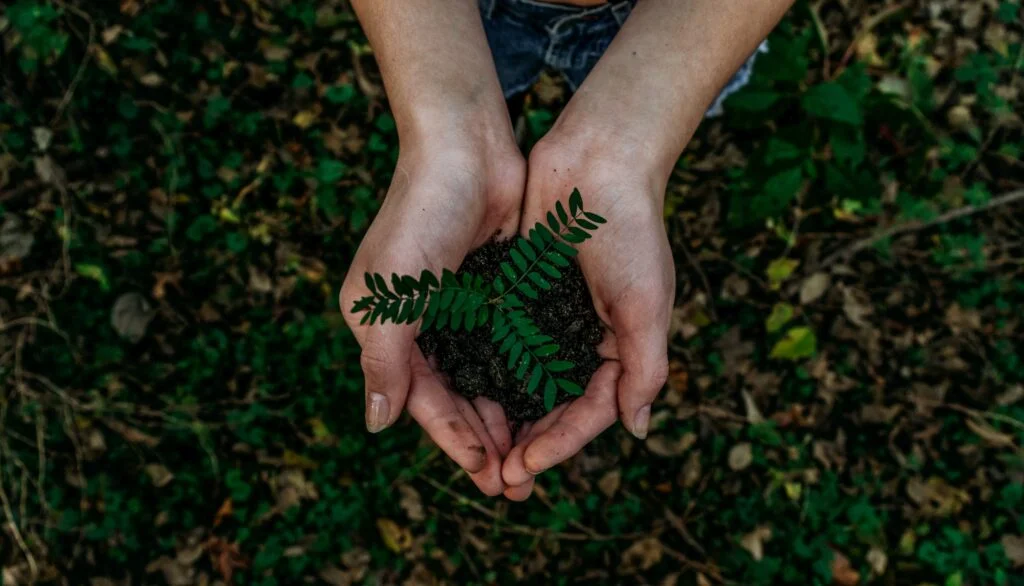– Sangyukta Das
“ If it can’t be reduced, reused, repaired, rebuilt, refurbished, refinished, resold, recycled, or composted, then it should be restricted, designed or removed from production. “
~ Pete Seeger
With concerns rising about the wrath of increasing natural calamities and environmental disasters, the question of climate change has taken the limelight in recent years. To combat this phenomenon of climate change, many people are switching to sustainable lifestyles. There have been campaigns on sustainability, sustainable living and zero waste lifestyle by many green groups and activists. But what does sustainability mean?
Sustainable_living refers to the activities that we practice in such a way that we make judicious use of the Earth’s resources while harming the environment in the least possible way. To live sustainably means that we need to use less of the Earth’s natural resources, replenish them in whatever ways we can and produce as little waste as possible. The sustainable lifestyle needs us to alter our ways of energy usage, transportation, and also diet. It mainly revolves around the four R’s- Reduce, Reuse, Recycle and Recover.
Environment Sustainability and Sustainable Development
While environmental sustainability and sustainable development have the same aims and objectives of conserving natural resources and engaging in more environmentally friendly practices and projects however they differ in the activities needed to accomplish them.
Environmental sustainability is concerned with conserving and preserving the natural resources while exploring alternative sources of power which can be more efficient and thus reduce pollution and harm to the environment. It aims to create a more sustainable environment which can be conserved for future generations. On the other hand, sustainable development concerns the practices of developing land and construction projects in such a manner that reduces their impact on the environment by letting them create energy-efficient models of self-sufficiency. It aims to reduce the carbon footprint of the industries and make them more environmentally friendly.
So, sustainable living combines both these concepts to help us live a healthier and socially conscious lifestyle.
Why live sustainably?
The earth’s surface temperature was around 0.95 degrees warmer in 2019 than the 20th century and in the last few years, the global temperatures have been the highest on record. While global CO2 emissions sum up to nearly 36.5 billion metric tons, the rising sea levels have led to a reduction in arctic sea ice and also several weather-related catastrophes, including wildfires, storms, floods and droughts. Looking at the destruction caused due to climate change, switching to more sustainable lifestyles and gradually amending the harms that the human race has caused previously is the only probable solution to combat it.
How to practice sustainable living?
Sustainable living is a gradual process which starts from home and then can be practised in all other spheres. It can start with a few basic steps that need to be followed meticulously and strictly. The steps have been listed as follows:
1. Eat more fruits and vegetables and reduce meat intake
The meat industry worldwide accounts for 14.5 per cent of the total greenhouse emissions and the milk industry nearly accounts for the same amount. So, the best solution is to go vegan. Vegan diet comprises locally grown fresh fruits and vegetables, reduced packaged foods and healthier ways of cooking and processing them. Organic food is also becoming largely available in the farmer market and also in a few shopping outlets.
2. Choose to travel by train over-air
While travelling by air may be less time consuming and quite hassle-free, however, its costs on the environment are much higher than that of train travels. A flight from Delhi to Mumbai results in 0.18 tonnes of CO2 emissions per person and this equals 87 showers of 10 minutes and 92 days of TV watching. This travel will cost much less once we switch to train travel.
3. Conserve energy and water at home
It involves taking some basic steps at home which can make a positive impact on the environment. One can switch to renewable energy suppliers, use energy-efficient LED bulbs, not leave electrical appliances on standby mode, collect rainwater and use it to water the garden etc.
4. Switch to sustainable fashion
The fashion industry worldwide causes 20% of all freshwater pollution in the process of textile treatment and dyeing. So switching to sustainable fashion, one which has clothing that requires less to no chemical treatment, little water, and less energy is the best choice. To make a sustainable wardrobe, we can follow the few small steps listed:
1) Wear the clothes that we buy and get a lot of use out of old clothes.
2) Prioritise quality over quantity.
3) Take care of clothes and use cold water for washing them.
4) Donate the clothes that we don’t want anymore.
5) Be more informed about the brands and choose those who follow environmental regulations.
5. Reduce single-use plastic
Often, we buy packaged materials and once the inner contents are consumed and used up, we dump the plastic container or packaging into the trash. However, once we start avoiding them, we will see that the waste generated from our homes drastically reduces. Recycling the containers and reusing them can be the alternative too.
6. Make your workplace sustainable
Switch to more open-aired work stations and prefer to open the blinds rather than use the lights during daytimes. The plastic cutlery used around the workplace can be switched to environment-friendly mediums and also going paperless can reduce tons of waste generated from the offices.
Conclusion
Sustainable living is a lifestyle that needs to be adopted principally as much as it is possible by us. Even though it will require some major changes to our habits and our methods of livelihood, however, it will all be worthwhile once we start doing it bit by bit to provide a secure future for the future generations.
Must Read :
https://skchildrenfoundation.org/harmful-effects-of-crackers-on-animals/


